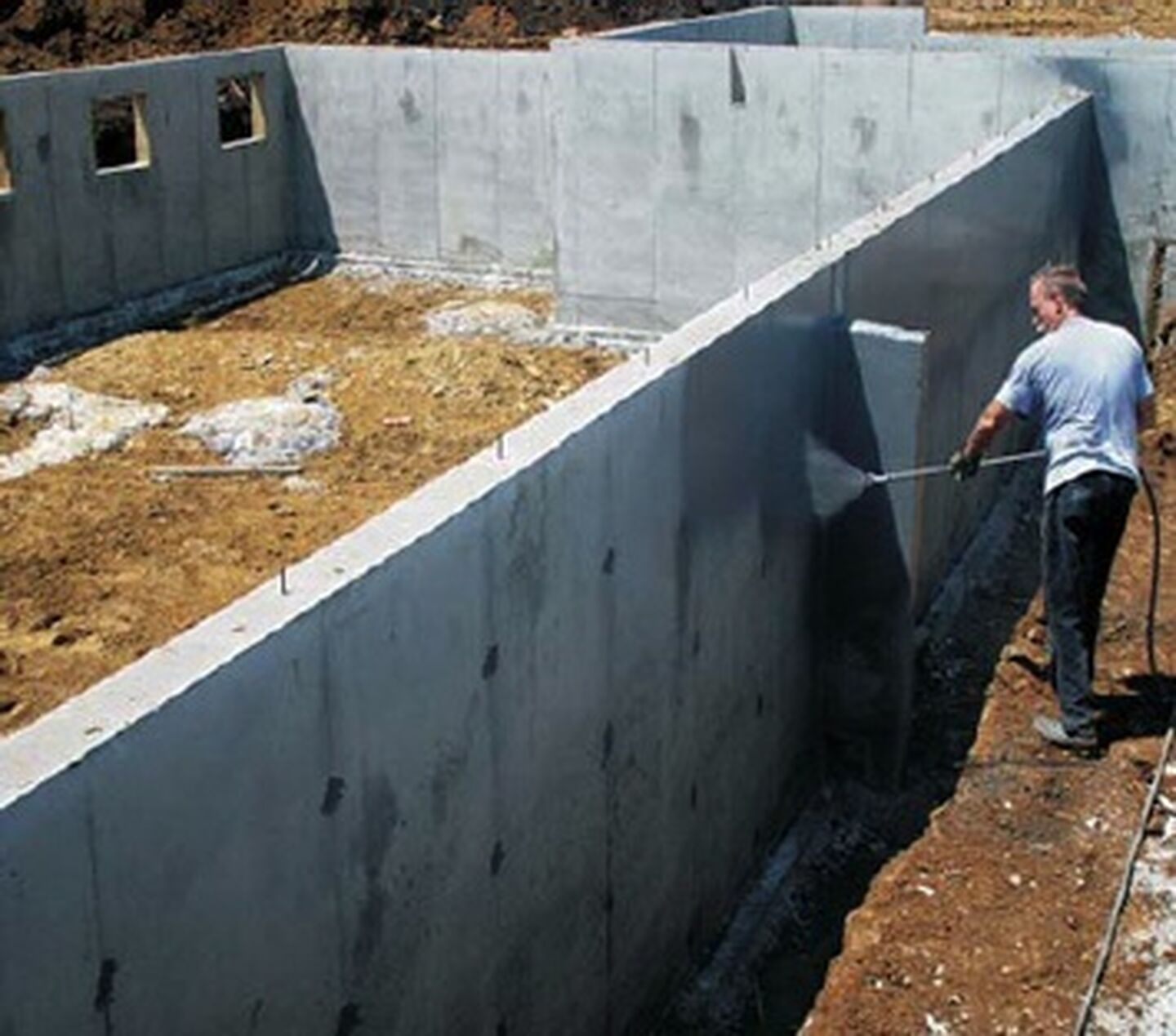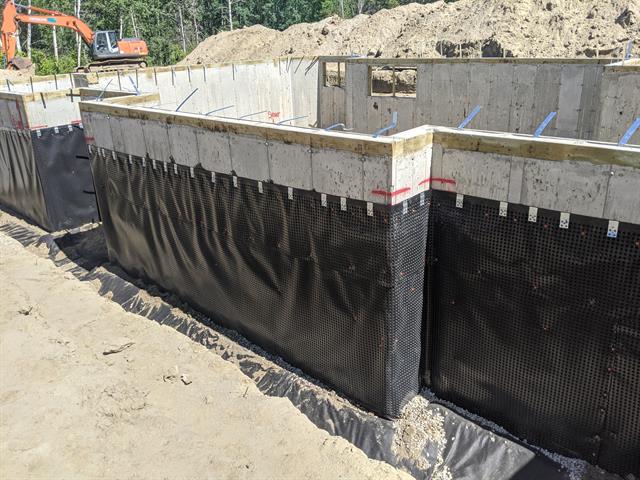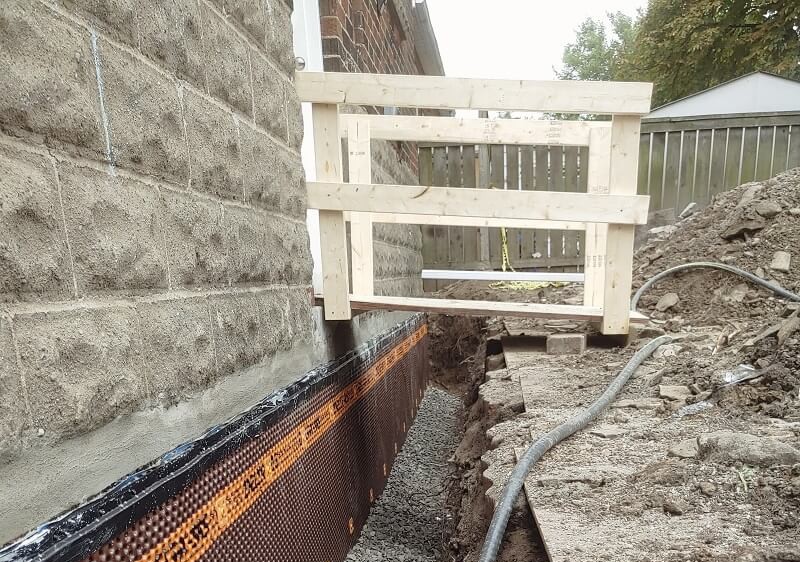Seven key methods for mould removal newcastle that deliver results
Seven key methods for mould removal newcastle that deliver results
Blog Article
Exploring the Numerous Strategies and Solutions for Effective Damp Proofing
Dampness in structures positions considerable challenges to both architectural honesty and interior air top quality. Various techniques and services have actually emerged to combat this pervasive issue. From conventional damp-proof membrane layers to cutting-edge chemical treatments, each method uses one-of-a-kind benefits. Recognizing these options is necessary for reliable moisture control. Nonetheless, choosing the right solution relies on details building problems and needs, triggering additional exploration right into one of the most effective damp proofing methods offered.
Comprehending the Sources Of Dampness
Moisture can develop from numerous resources, recognizing these causes is important for reliable remediation. Commonly, moisture originates from three primary sources: increasing wet, penetrating damp, and condensation. Increasing moist occurs when groundwater takes a trip up-wards through permeable products, such as block or stone, commonly as a result of a lack of a reliable barrier (damp specialist newcastle). Penetrating moist is typically caused by outside elements, consisting of roofing system leaks, defective seamless gutters, or damaged wall surfaces, enabling water to penetrate a residential property. Condensation, on the various other hand, results from excess dampness airborne, commonly aggravated by bad air flow and temperature differences, bring about water beads basing on surfaces. Recognizing these underlying problems is crucial, as each sort of moisture calls for a customized technique for remediation. Correct assessment helps in figuring out the most efficient options, ultimately securing the architectural stability of a structure and boosting interior air top quality
Traditional Damp-Proof Membrane Layers

Chemical Damp-Proofing Solutions
Chemical damp-proofing remedies offer a cutting-edge technique to avoid dampness intrusion in buildings. These approaches normally involve the application of liquid chemicals that penetrate masonry and develop a barrier versus climbing moist. Generally used chemicals include silanes, siloxanes, and various other water-repellent agents that react with surface products to produce a hydrophobic layer.The application process usually calls for exploration openings into the wall surfaces, injecting the chemical solution, and permitting it to heal. This method is particularly useful for older structures where typical damp-proof membranes may be unwise. Moreover, chemical damp-proofing can be less disruptive and much more affordable than substantial improvement projects.While reliable, these services rely on proper application and ecological problems for peak efficiency. Normal maintenance and tracking are necessary to assure the durability of the damp-proofing treatment. On the whole, chemical damp-proofing stands for a flexible choice for protecting buildings against moisture-related damages
Cavity Wall Surface Construction Methods
Dental caries wall surface building methods offer countless benefits, specifically in wetness control and power efficiency. By including an air space in between two layers of masonry, these wall surfaces effectively mitigate water ingress while boosting insulation. This combination not just protects frameworks from moisture but also adds to lowered energy intake.
Advantages of Cavity Wall Surfaces
When taking into consideration efficient damp proofing approaches, the advantages of tooth cavity wall surfaces stand apart prominently. Dental caries walls contain 2 different layers, creating an air space that efficiently reduces wetness infiltration. This design reduces the danger of dampness, as the outer wall functions as a barrier versus rain and water ingress. In addition, dental caries wall surfaces improve thermal insulation, which contributes to energy performance by lowering warmth loss. They also give audio insulation, helping to develop a quieter interior setting. The air space enables for ventilation, which assists in wetness control and lowers the chance of mold development. These advantages not only enhance the overall convenience of a building yet additionally add to its durability and architectural honesty.
Wetness Control Strategies
Efficient wetness control techniques are important in dental caries wall building to guarantee long-lasting protection against dampness. One primary technique includes the unification of weep holes, which help with water drainage from the cavity, stopping build-up. In addition, the use of breathable membranes can assist take care of dampness levels while enabling caught vapor to leave. Proper placement of insulation is also critical, as it needs to not obstruct drainage paths. Moreover, ensuring that the outer leaves of the cavity wall surface are built with water-resistant materials improves general sturdiness. Regular maintenance checks are vital to identify any clogs or damages early, guarding the structure's stability. Inevitably, a mix of these techniques creates a durable protection against wetness invasion in cavity walls.
Insulation and Power Effectiveness
Insulation plays an essential function in enhancing energy efficiency within cavity wall surface building. By including shielding materials, these wall surfaces produce a thermal barrier that minimizes warmth loss and reduces power usage. Effective insulation not only helps keep a stable indoor temperature but additionally reduces the danger of moisture, as it avoids condensation within the wall cavity. Numerous methods, such as using stiff foam boards or mineral wool, can be used to achieve suitable insulation performance. Furthermore, correct setup is vital to ensure that spaces and voids are lessened, which can otherwise compromise power efficiency. Eventually, a well-insulated dental caries wall surface adds significantly to overall sustainability and decreases cooling and heating expenses for homeowners.
Outside Damp Proofing Approaches
External damp proofing techniques are essential for securing frameworks from moisture infiltration. Two reliable strategies include the application of water resistant membranes and the setup of French drains pipes. These options assist alleviate water buildup and preserve the honesty of structures.
Waterproof Membrane Layer Application
While numerous methods exist for avoiding dampness ingress, the application of water-proof membranes remains an extremely effective external wet proofing method. These membrane layers are normally made from products such as polyethylene, rubber, or changed bitumen, supplying a durable barrier versus water infiltration. The installation procedure includes applying the membrane layer to the outside surface areas of walls or structures, guaranteeing full protection to stop leaks. Correct adhesion and sealing at joints are important to taking full advantage of performance. Waterproof membranes can be used in numerous kinds, including liquid finishes and sheet membranes, permitting versatility based on the particular needs of the structure. This technique not only shields structures from wetness but likewise improves their long life and structural integrity.
French Drainpipe Setup
One reliable technique for handling groundwater and avoiding moisture accumulation around a building's foundation is the setup of a French drainpipe. This drain system contains a trench full of gravel and a perforated pipeline that redirects surface water far from the foundation. Correct setup calls for cautious preparation, ensuring that the drainpipe inclines far from the framework to facilitate excellent water circulation. Additionally, the place of the drainpipe is important; it should be positioned in areas susceptible to merging or excess moisture. Routine maintenance, including cleaning particles from the gravel and ensuring the pipe continues to be unhampered, is crucial for lasting performance. Ultimately, a well-installed French drainpipe can substantially reduce the danger of water-related problems in foundations and basements.
Inside Waterproofing Methods
Interior waterproofing methods are vital for safeguarding a structure's interior from dampness infiltration and prospective water damages. These techniques usually include the application of specialized materials and strategies made to produce a moisture barrier within the structure. One typical strategy is using water resistant layers or sealers on walls and floorings, which prevent moisture from penetrating surfaces.Additionally, setting up indoor drainage systems, such as sump pumps, can properly handle water buildup in basements and creep areas. An additional technique entails making use of vapor barriers, which are set up to prevent dampness movement from the ground into living spaces.Moreover, attending to any kind of fractures or gaps in walls or foundations with ideal sealers ensures a complete defense against water breach. By implementing these indoor waterproofing methods, residential property owners can substantially lower the threat of mold development, architectural damages, and other moisture-related issues. Correct execution of these methods is essential for lasting security and building integrity.
Normal Maintenance and Examination Practices
Routine maintenance and assessment practices are important for assuring the long-lasting performance of moist proofing services in any kind of building. Regular checks make it possible for home proprietors to determine very early indications of moisture intrusion, such as peeling off paint, mold and mildew growth, and stuffy odors. These indicators can signify underlying issues that call for prompt attention.Inspections need to be conducted at the very least annually, concentrating on susceptible locations like basements, creep rooms, and outside walls. Throughout these evaluations, homeowner need to check out sealers, water drainage systems, and ventilation to validate they function correctly.Additionally, preserving downspouts and seamless gutters is crucial, as clogged up systems can lead to water build-up near the foundation. Implementing a normal maintenance routine, along with prompt repairs, can substantially extend the life-span of wet proofing actions and protect the architectural integrity of the structure. Aggressive measures ultimately add to the overall health and safety and security of the living atmosphere.
Regularly Asked Questions
The Length Of Time Does Damp Proofing Usually Last?
The period of damp proofing performance differs, normally lasting between 20 to 50 years. Aspects such as application quality, environmental conditions, and upkeep methods significantly affect the long life of the wet proofing treatment.

Can I Damp Evidence My Home Myself?
The individual pondered the feasibility of do it yourself damp proofing. With appropriate study and the best products, it is feasible. They additionally recognized the relevance of expert advice to assure lasting performance and prevent future problems.
What Are the Indicators of Ineffective Damp Proofing?
Indications of inefficient moist proofing consist of persistent musty odors, noticeable mold and mildew development, peeling off paint, moist spots on walls, and wood degeneration - damp removal click here newcastle. Home owners should address these problems without delay to stop additional damage and wellness concerns
Does Damp Proofing Affect Indoor Air High Quality?

Exactly How Much Does Professional Damp Proofing Expense?
Expert moist proofing prices differ significantly, normally ranging from $1,000 to $5,000 depending on the home's dimension, the degree of the wet concern, and chosen methods. Each scenario calls for a tailored evaluation for exact rates. Commonly, dampness stems from three key resources: increasing damp, permeating moist, and condensation. When taking into consideration effective moist proofing approaches, the benefits of dental caries wall surfaces stand out prominently. Exterior wet proofing techniques are crucial for securing frameworks from wetness infiltration. While numerous methods exist for avoiding dampness ingress, the application of water resistant membranes continues to be an extremely reliable external damp proofing strategy. Indicators of inefficient wet proofing include relentless stuffy odors, noticeable mold and mildew growth, peeling paint, wet patches on wall surfaces, and wood decay.
Report this page